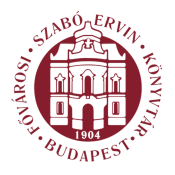Matits Ferenc: Protestant Churches - Our Budapest (Budapest, 2003)
with hidden lights accentuating the altar and the pulpit. The pews and chairs seating 300 were made in the workshop of cabinet-maker Gyula Jakab. Designed by Viktor Sugár, the organist of the Matthias Church, the organ was made by the Budapest-based Rieger company. To plans by Imre Sulyok and Gábor Trajtler, the instrument was enlarged in the 1970s and now the 29-register organ has three manuals and more than two thousand pipes. In 1988, the organ was equipped with a Rückpositiv. The advantageous position, shape and size of the plot made it possible to build a complex which can serve both as the home of ecclesiastical personnel, such as parsons and theology teachers, and as the venue of extramural religious events, as well as being the scene of religious worship. The Lutheran Church of Budafok No. 16 Játék utca, District XXII In Budafok, the first religious service according to the Protestant faith was held in a private residence in 1899 by Benő Haypál, a Calvinist parson of Buda. The following year, the Calvinists of Budafok and Albertfalva formed a branch parish and built a house of worship in Kereszt utca. They allowed the Lutheran Congregation of Budafok, established in 1921, to use their house of worship temporarily. In 1923 the congregation decided to build their own church. They petitioned the local municipality for a free plot, and were in fact granted an allotment of 1,600 square yards in the market square of the time. A nation-wide fund-raising campaign was launched in 1925 to collect the required amount. In the autumn of 1932, the municipality allotted a new plot in lieu of the original one. The congregation then commissioned two architects to draw up the designs of a church. The designs approved by the assembly of the congregation called into session on 31 December 1933 had been made by Gyula Sándy (1868-1953), who had designed 21 churches by that time. Although plans were prepared for it by Sándy, the wing meant to contain a parsonage and a congregation hall was not erected in the event. A Church Construction Committee was set up to oversee the project. Started on 11 June 1934, construction work received significant support from Prime Minister Gyula Gömbös of Jákfa, himself a member of the congregation. The foundation stone was ceremonially laid on 8 July 1934, and the building was consecrated on 3 November the following year. 27
